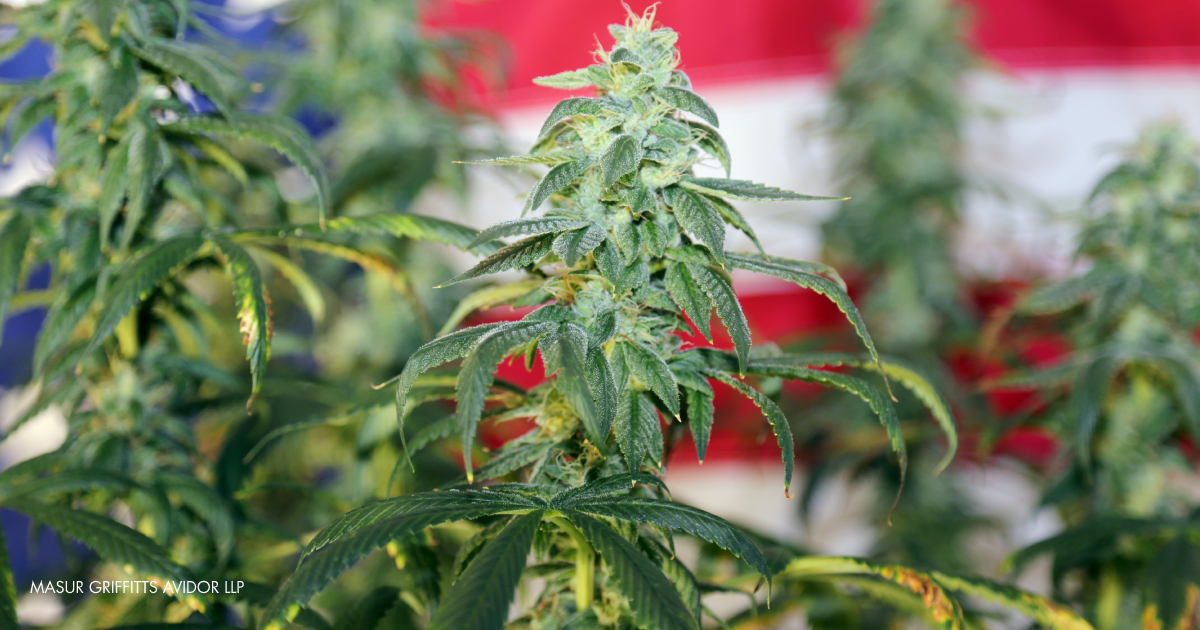Cannabis Advertising Laws: The States’ Way or the Highway
By: Jon Avidor, Sarah Siegel and Liam McKillop
As cannabis continues to be classified as a Schedule I drug under the Controlled Substances Act, federal law prohibits any written advertisement placed in a newspaper, magazine, on the internet, or in any other publication which has the purpose of “seeking or offering illegally to receive, buy, or distribute [cannabis].” While this broad legislation significantly limits the available advertising options for cannabis companies and retailers, it only applies to advertisements that seek to facilitate a transaction of the good and is silent as to advertisements whose purpose is to promote the use of cannabis. However, most states have enacted legislation that places further restrictions on the content, nature, location, and size of cannabis advertising. This article seeks to give an overview of the various forms of state regulation—with a specific focus on states with legal recreational programs—on cannabis advertising, by exploring the similarities and differences between the legislation and examining the different rules in place for both traditional advertising and digital advertising.
Digital Advertising Landscape
The digital marketing platforms available to cannabis companies and retailers are currently extremely limited. In general, TV and Radio broadcasters steer away from cannabis advertisements, largely due to uncertainty about FCC policy and concerns with their FCC licenses being taken away. Further, Google and Facebook—the two companies which dominate the online digital advertising market—currently severely restrict the advertising options for cannabis businesses. Google lists cannabis under the headline of “dangerous products and services” which it bans in order to keep people safe from the “promotion of some products or services that cause damage, harm or injury.” It is quite telling of Google’s view on cannabis, as the other good and products listed within this category are guns, explosives, and tobacco; at the same time, Google has a completely separate policy for alcohol advertising. Facebook has a similar ban on advertisements that promote the sale or use of illegal or recreational drugs and provides specific examples of prohibited advertising activity (which includes using images of smoking-related accessories like bongs and rolling papers or images which simply imply the use of a recreational drug). While Facebook has flirted with the idea of revamping its current policies, and recently began to allow the pages of legally operating cannabis retailers to appear in Facebook searches, it’s strict advertising policies still remain intact, much to the dismay of cannabis communities.
Traditional Advertising Landscape
While there is a larger market of available options for cannabis companies and retailers when it comes to print, billboard, and signage advertisements, there are still many restrictions in place which vary from state to state. Colorado—the first state to legalize the recreational use of cannabis—enacted cannabis advertising legislation which is very similar to the state’s laws related to alcohol advertising. The use of outdoor public advertising for cannabis retailers in Colorado is extremely limited, with fixed signs on the zoning lot for the purpose of identifying the location of the business is the only thing permitted. While retailers are prohibited from using billboards in Colorado to advertise their stores and products, about half of the state’s “Adopt-a-Highway” signs display the logos of local cannabis businesses, a “loophole” being exploited by these businesses. Further, the billboard laws do not apply to cannabis companies such as WeedMaps—an app that primarily provides locations and reviews for dispensaries—as the company is not in the business of selling cannabis, permitting the companies “Weed Facts” campaign to be run on billboards within the state. New York has similarly strict restrictions on external signage, requiring the publicly viewable signage of medical cannabis retailers to be non-illuminative and only in black and white colors; just across the water, the state of New Jersey also has identical restrictions in place.
Health and Safety Concerns
The Federal Trade Commission—a government agency in place to protect American consumers—regularly monitors health-related advertising claims and routinely sends warning letters to cannabis companies whose advertisements promote the prevention, treatment, or cure of symptoms without proven scientific evidence to backs up such claims. The FTC takes these matters extremely seriously, requiring any company that receives a warning to notify the FTC of the specific action they took to remedy the agency’s concerns. The warning letters also serve to inform offending cannabis companies of the legal consequences of the prohibited unsubstantial health promotion, which can result in an injunction to both stop sales and force the refund of money to consumers. Most states have further legislation in place to enact specific requirements for cannabis advertisements which make health claims, with all of them requiring similar scientifically proven substantiation of any claims being put forward. The state of Alaska requires five different warnings to be placed on all advertising, including statements such as “[cannabis] has intoxicating effects and may be habit forming and addictive” and “[t]here are health risks associated with consumption of [cannabis].”
Beyond health concerns, many state laws have checks to ensure that advertisements are not targeting individuals under the age of 21. For instance, California laws require any cannabis advertising placed in digital communications to be displayed only where “at least 71.6% of the audience is reasonably expected to be 21 years of age or older” while also prohibiting signage within 1,000 feet of any elementary school, high school, playground or youth center. The state’s laws further forbid the use of cartoons, music, and symbols which are known to contain elements that appeal to persons younger than 21.
Conclusion
As the world of cannabis advertising is filled with strict policies that vary across state lines and general confusion about federal guidelines, it is important for a business to err on the side of caution and consult with legal experts when creating advertising campaigns. While successful advertising is rife with creativity, the rigorous health and safety requirements work to remove such ingenuity from the cannabis advertising industry. This puts cannabis retailers and companies in a tough spot, as they need advertisements to promote their business, but always have to keep the consequences of the law in the back of their minds.









